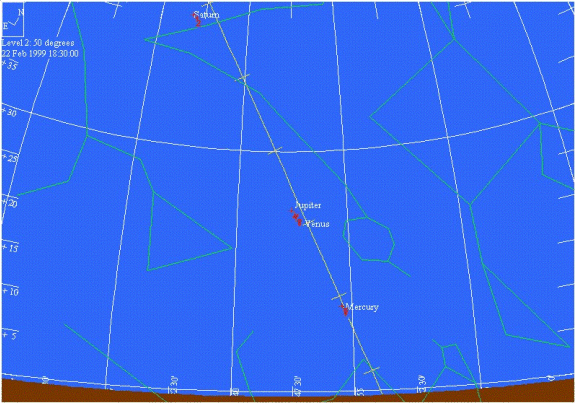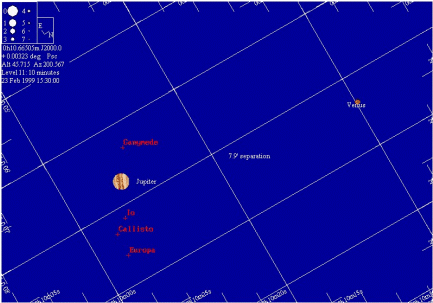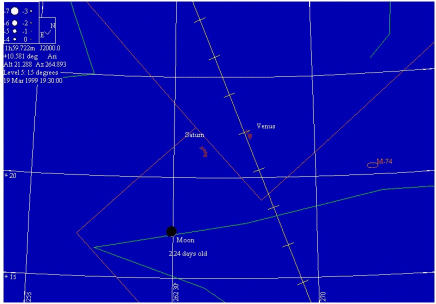

After scanning the numerous almanacs and astronomical calendars at my disposal, I find that we are about to witness a number of lunar and planetary groupings or conjunctions. The most spectacular of these will happen on February 23rd, when Jupiter and Venus will be less than 0.1 degree apart, but more on that later.
Lets start with the lunar / planetary grouping on February 18th, when the three day old crescent Moon will be less than 3 degrees of Venus and Jupiter. Don’t miss this excellent opportunity to photograph the three brightest objects of the evening sky all in the same field of view. If conditions are right you might also capture a little “earthshine” in your photo.
Then from February 22nd through the next two weeks, four bright planets will be visible in the evening twilight. About 45 minutes after sunset look for Mercury just 10 degrees above the western horizon, Jupiter and Venus about 10 degrees higher and finally Saturn still well placed at about 40 degrees above the west - southwestern horizon.
To see all of these planets lined up along the ecliptic, you are going to need three things of equal importance. First, and as usual the toughest, you will need clear skies. Second, you will need an unobstructed view of the southwest to western horizon. Third, you need to know precisely where and when to look. (See chart 1)

Now on February 23rd at 20:30 UT = 15:30 EST, Jupiter and Venus will be within 8’ of each other. Both planets are bright enough to be seen at that time, but you will need some optical aid. This is another scene that you will need to know exactly where to look (See chart 2). At 23:30 UT = 18:30 EST this closest of planet - planet conjunction for the year, will still find Jupiter and Venus over 15 degrees above the southwestern horizon and less than 13’ of separation between them. I definitely want to see some telescopic photographs of this. The two planets are bright enough that exposures of 1/4 to 1 second will be sufficient to capture the moment.

The last grouping of celestial objects I am going to mention in this article is the Lunar - Saturn - Venus of March 19th. This is another photographic challenge. The Moon is only a little over 2 days old and Saturn and Venus are only 2.4 degrees apart, the whole group will be about 18 plus degrees above the western horizon at 45 minutes after sunset. (See chart 3)

If we have some clear skies and you miss these.... Well... shame on you! All charts produced with Guide 7.0